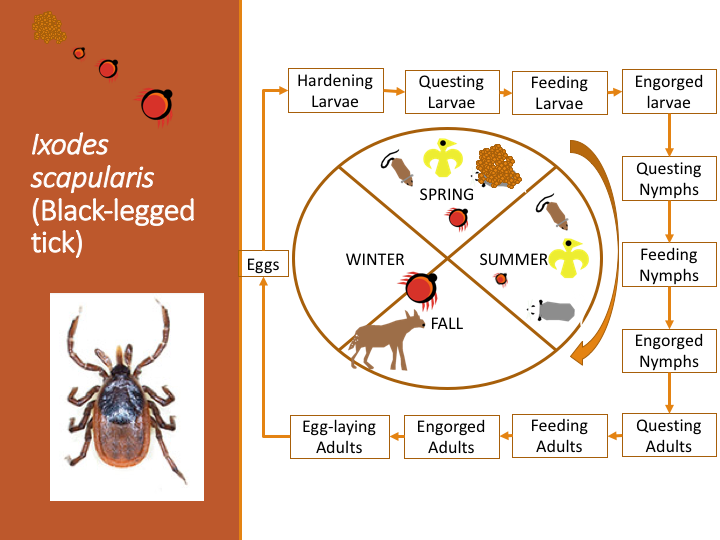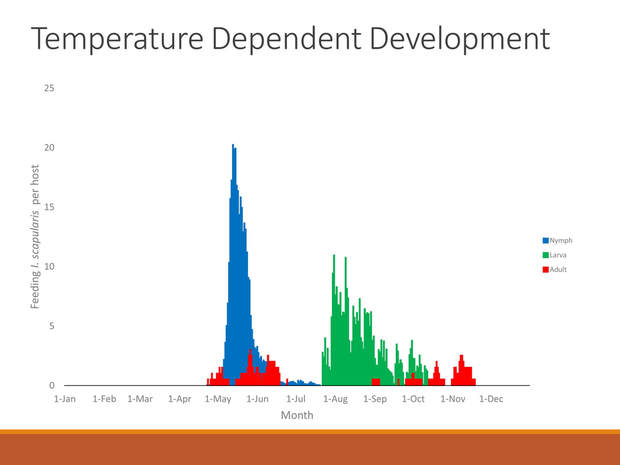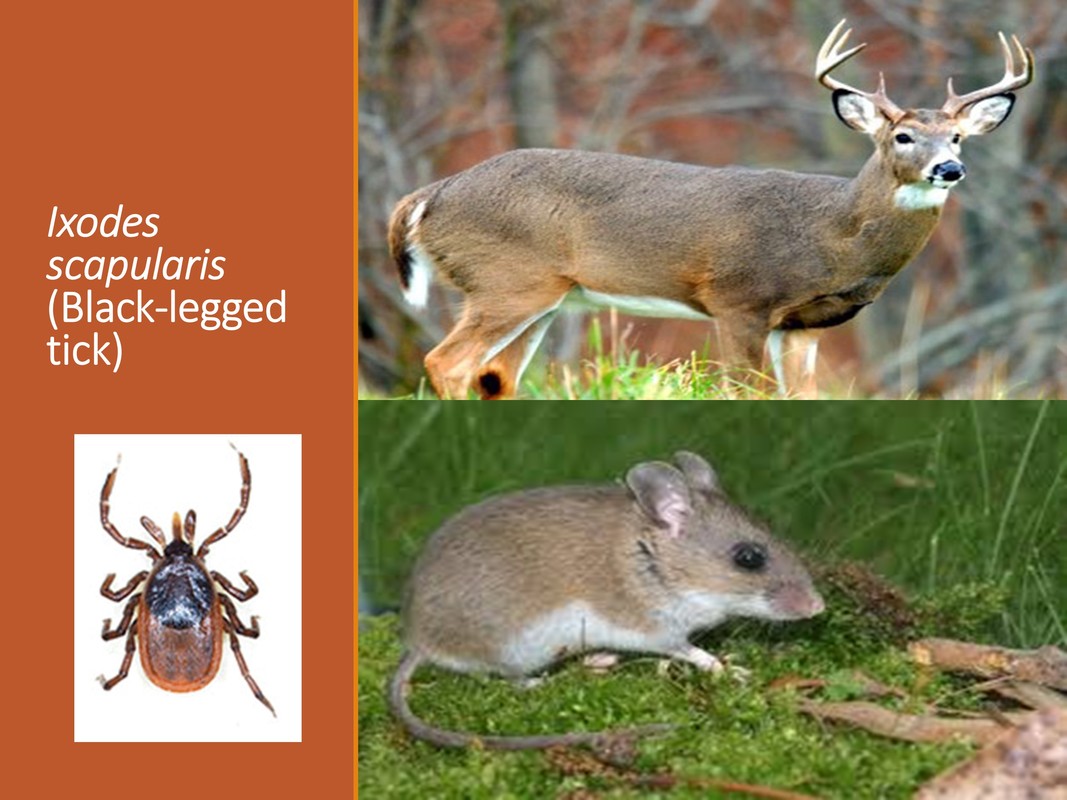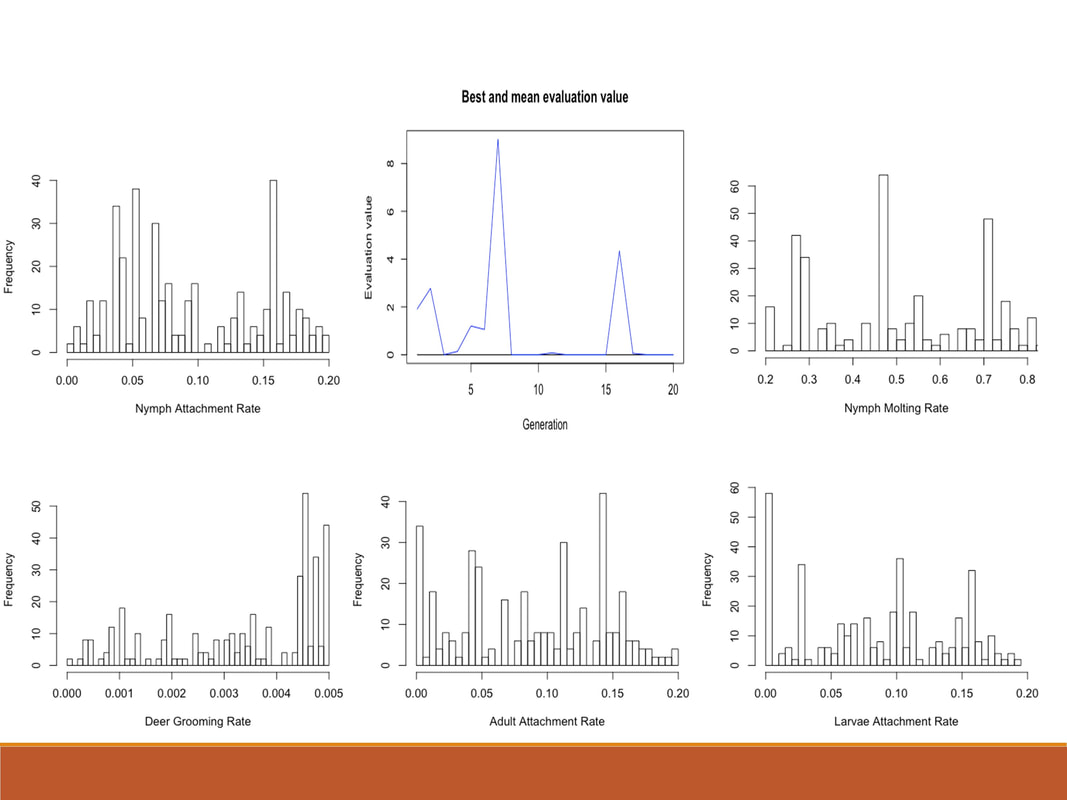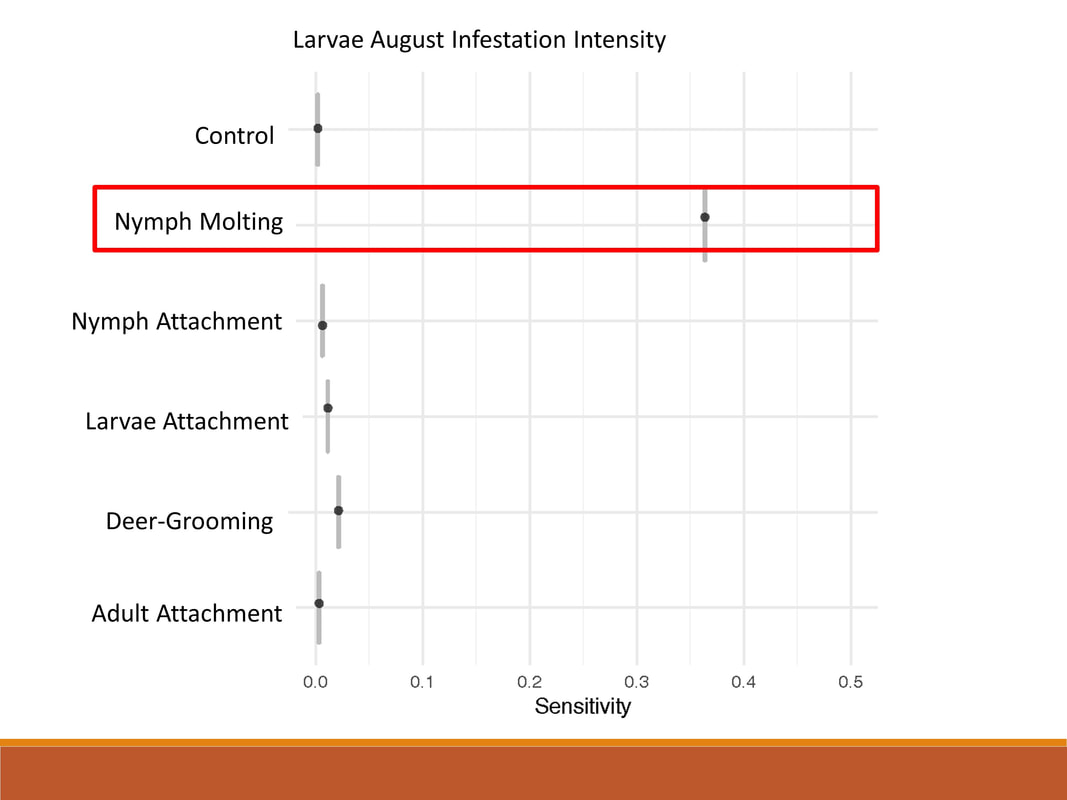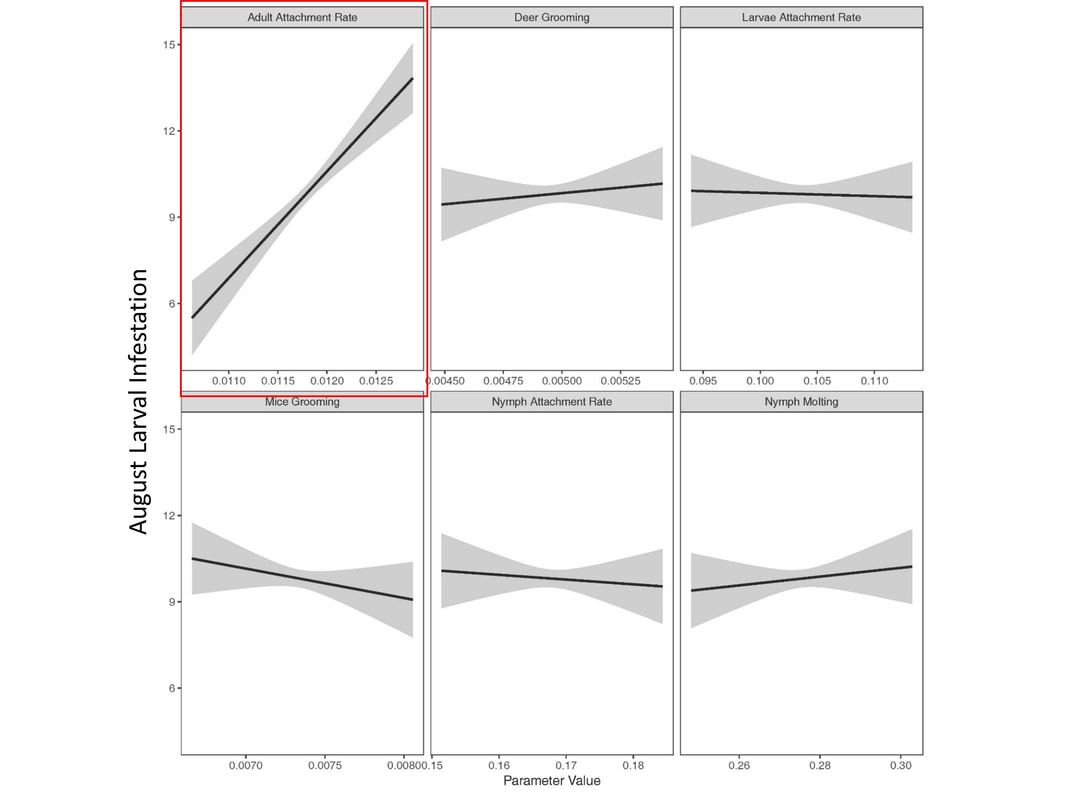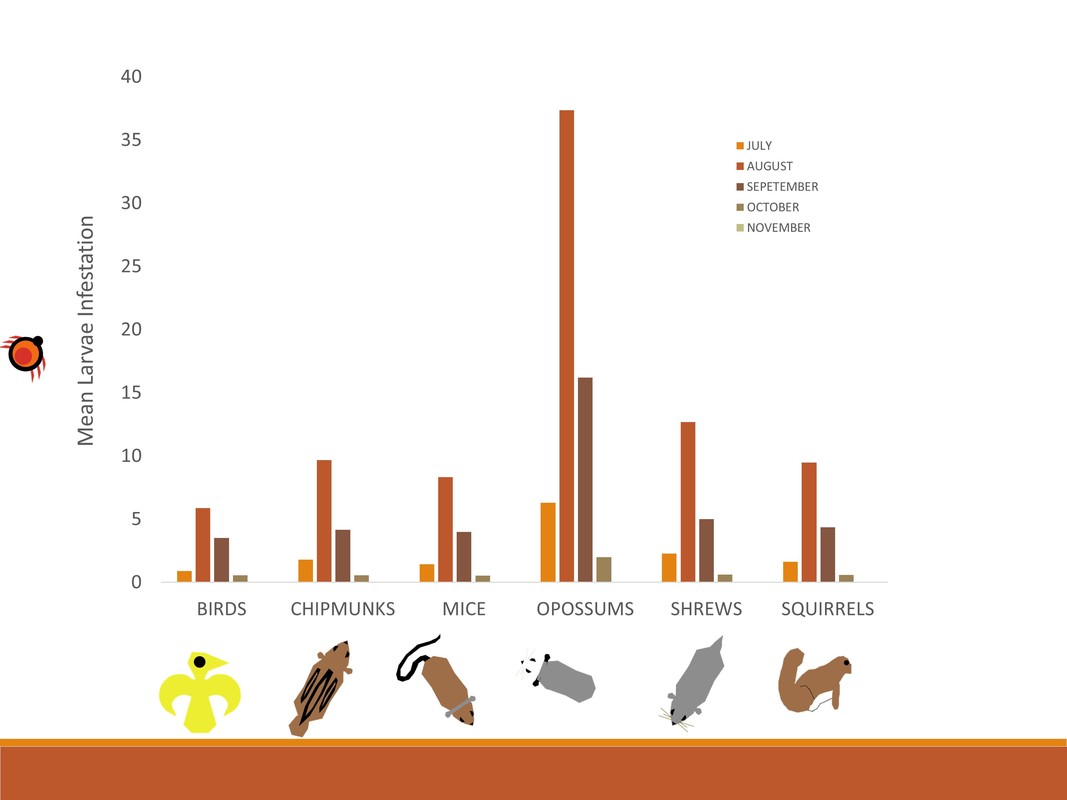ABSTRACT
Previous approaches to elucidating these mechanisms have primarily been limited to determining the roles that individual host species play in the transmission of B. burgdorferi by I. scapularis. More recently, the use of a community framework to examine the ecological relationships involved in this tick-borne disease has gained attention. However, there needs to be better integration of knowledge to identify the mechanisms associated with the invasion and establishment of I. scapularis and B. burgdorferi.
While an individual-based model was created to simulate the effects of changes in host density on the prevalence of infected ticks, this exercise focused on the differences in tick-host-landscape interactions with a hypothetical pathogen and did not distinguish between differences in host reservoir competence. Tick-borne diseases are difficult to study in nature due to the complexity of the interactions between ticks, pathogens and wildlife hosts’; however, my proposed modelling approach allows for exploring different host composition scenarios that will enhance our understanding of the mechanisms driving the patterns seen in nature.
Here we describe the implementation of a spatially explicit individually-based model (SEIBM) designed to represent the relationships between I. scapularis, its wildlife hosts, and the environment in Northeast US. Our main purpose was to design and implement a model that could simulate tick-host interactions in both a spatially and temporally realistic manner. In addition, we tested the robustness of the model to parameter uncertainty by performing sensitivity analysis which also served to explore the life stages which most affects the number of larval ticks feeding on small mammals which can influence Lyme disease risk.
Previous approaches to elucidating these mechanisms have primarily been limited to determining the roles that individual host species play in the transmission of B. burgdorferi by I. scapularis. More recently, the use of a community framework to examine the ecological relationships involved in this tick-borne disease has gained attention. However, there needs to be better integration of knowledge to identify the mechanisms associated with the invasion and establishment of I. scapularis and B. burgdorferi.
While an individual-based model was created to simulate the effects of changes in host density on the prevalence of infected ticks, this exercise focused on the differences in tick-host-landscape interactions with a hypothetical pathogen and did not distinguish between differences in host reservoir competence. Tick-borne diseases are difficult to study in nature due to the complexity of the interactions between ticks, pathogens and wildlife hosts’; however, my proposed modelling approach allows for exploring different host composition scenarios that will enhance our understanding of the mechanisms driving the patterns seen in nature.
Here we describe the implementation of a spatially explicit individually-based model (SEIBM) designed to represent the relationships between I. scapularis, its wildlife hosts, and the environment in Northeast US. Our main purpose was to design and implement a model that could simulate tick-host interactions in both a spatially and temporally realistic manner. In addition, we tested the robustness of the model to parameter uncertainty by performing sensitivity analysis which also served to explore the life stages which most affects the number of larval ticks feeding on small mammals which can influence Lyme disease risk.
|
We chose to include only white tailed deer and white footed mice in the initial model as these are the two hosts thought to be the bare minimum needed in the community for this tick to survive. Future research will add additional wildlife hosts which are purported to either provide additional blood meals for the tick or decrease survival of the tick, altering tick population size.
|
|
We obtained parameter estimates from the literature, however there were five parameters for which we we unable to drawn from the literature. These parameters were deer grooming, nymph molting, and attachments rates for larvae, nymphs, and adults. We examined the full range of the parameter space through the process of categorical calibration to determine the best parameter set that duplicated the number of larval ticks feeding on mice at any given time during the summer.
|
